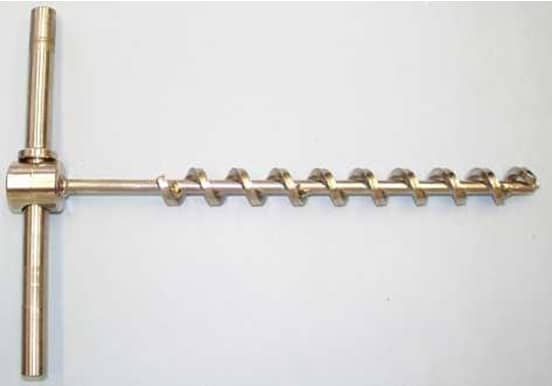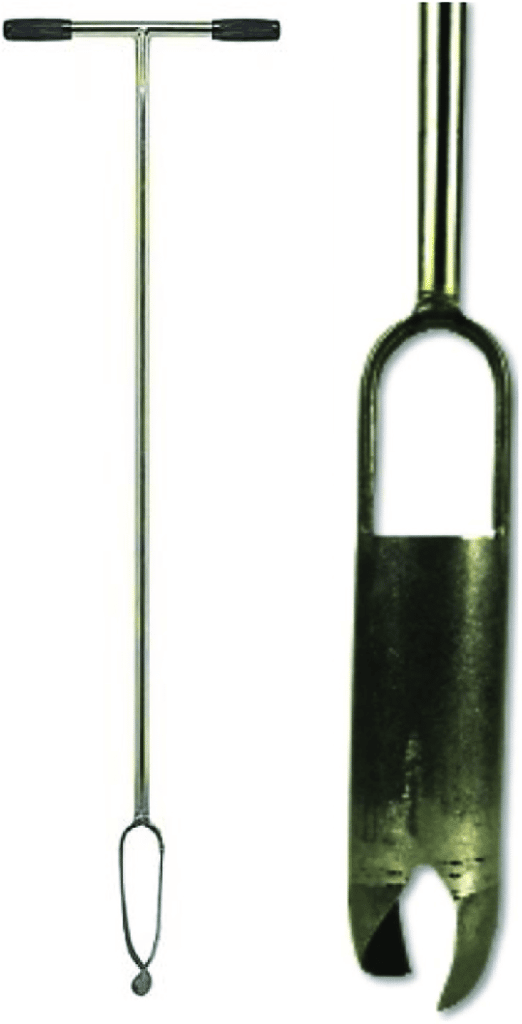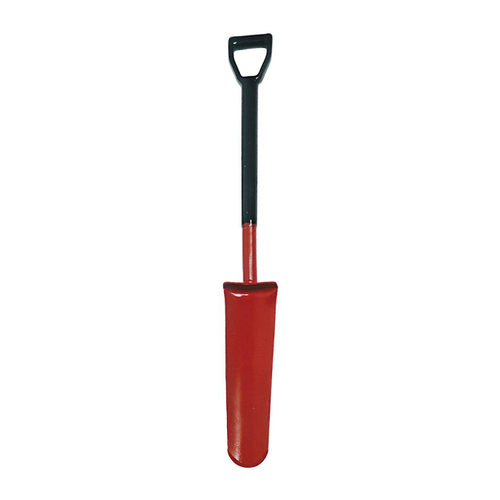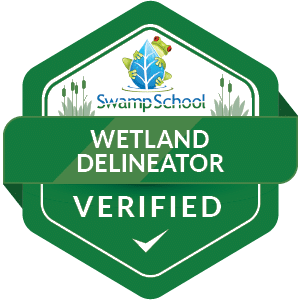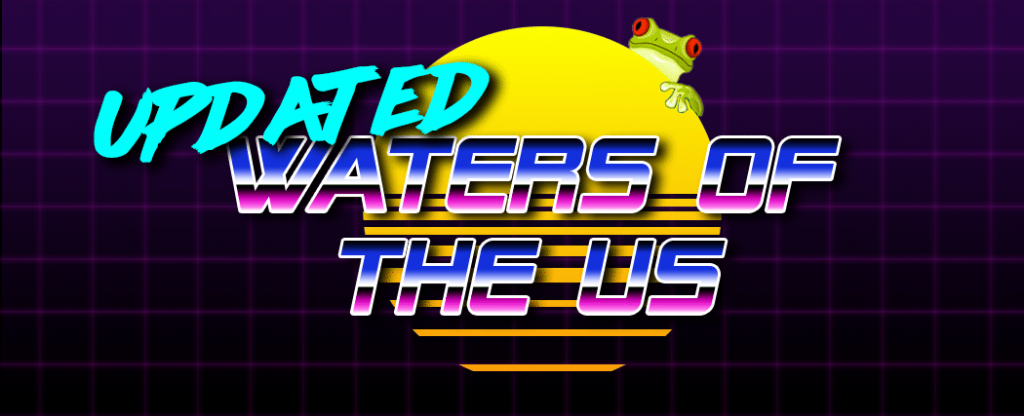The most common soil type we encounter in wetlands is the “F” group of hydric soils. These are the loamy mineral soils. The texture needs to be a fine sand or finer. Usually, we are looking at silts and clays.
Of all the indicators in the “F” group, the two most common ones are the depleted matrix, “F3”, or the dark surface, “F6.” It is not unusual to find both in the same soil pit. Both indicators are dependent upon soil color as their hydric condition test.
There are many variations of color associated with the “F” indicators. However, a basic rule of thumb is that they need to have a Munsell matrix chroma of 2 or less. There are provisions for chromas greater than 2 found in some of the other indicators. However, for the “F3” and “F6” we need to see colors that are at least as dark as a 2.
There is still some pushback from the old-time delineators on these new indicators. For decades we used a single indicator for soil color.
- Matrix chroma is 2 or less in mottled soils
- Matrix chroma is 1 or less in unmottled soils
This must occur at a depth of 10 inches or the bottom of the “A” horizon whichever is shallower.
This definition served us well, but it is no longer in use. However, when we look at the new “F” indicators we see that the old definition is buried in them (sorry for the pun).
One other oldie is the concept of mottling. This term has been replaced with the concept of redoximorphic features. We now refer to dark features as redox depletions and bright features as redox concentrations. Mottling always meant a mix of soil colors. However, it usually was expressed when the dark features were in the matrix (dominant color) and the bright features were individual masses. The use of the redox concentrations and redox depletions is much more descriptive and a change for the better.
Thickness of the indicator feature is also a new concept. Many of the “F” indicators not only require a specific soil color, but also a thickness associated with it. For example, a matrix with a chroma of 2 must be at least 6 inches thick in order to count as a hydric soil feature. To make this a bit more challenging some of these thickness requirements can be combined with other hydric soil indicators thickness requirements to make up any missing thickness goals. This only applies to certain indicators like the “F3” and “F6”.
The last caveat is that some of these features must occur within certain depth limits to count as a hydric soil feature. You must see the feature start at a specified depth and then extend for a certain thickness. On aspect of the “F3” requires that a depleted matrix must start in the upper 12 inches of the soil and extend for at least 6 inches. Thickness and depth are combined.
The “F3” indicator is one of the most frequently found indicators. It is referred to as a depleted matrix. There is a tricky part to this indicator regarding the use of the US Army Corps Regional Supplements. The definition of a depleted matrix is found in the glossary along with a nice graphic of what it means. The problem is that the hydric soils section leads you to believe that the full description of the feature is found within they hydric soil indicator description. It does not. You need to check the glossary.
The description starts with the idea that you have a depleted matrix. You need to know what a depleted matrix is. This involves an analysis of the soil color and percent redox features.
A depleted matrix is:
Depleted matrix. The volume of a soil horizon or sub horizon from which iron has been removed or transformed by processes of reduction and translocation to create colors of low chroma and high value. A, E, and calcic horizons may have low chromas and high values and may therefore be mistaken for a depleted matrix. However, they are excluded from the concept of depleted matrix unless common or many, distinct or prominent redox concentrations as soft masses or pore linings are present. In some places the depleted matrix may change color upon exposure to air (reduced matrix); this phenomenon is included in the concept of depleted matrix. The following combinations of value and chroma identify a depleted matrix:
- Matrix value of 5 or more and chroma of 1, with or without redox concentrations occurring as soft masses and/or pore linings, or
- Matrix value of 6 or more and chroma of 2 or 1, with or without redox concentrations occurring as soft masses and/or pore linings, or
- Matrix value of 4 or 5 and chroma of 2, with 2 percent or more distinct or prominent redox concentrations occurring as soft masses and/or pore linings, or
- Matrix value of 4 and chroma of 1, with 2 percent or more distinct or prominent redox concentrations occurring as soft masses and/or pore linings (USDA Natural Resources Conservation Service 2010).
Common (2 to less than 20 percent) to many (20 percent or more) redox concentrations (USDA Natural Resources Conservation Service, 2002) are required in soils with matrix colors of 4/1, 4/2, and 5/2. Redox concentrations include iron and manganese masses and pore linings (Vepraskas, 1992).
Once you figure that out you just need to look for depth and thickness of feature.
A layer with a depleted matrix that has 60 percent or more chroma of 2 or less and that has a minimum thickness of either:
- 2 in. (5 cm) if the 2 in. (5 cm) is entirely within the upper 6 in. (15 cm) of the soil, or
- 6 in. (15 cm) starting within 10 in. (25 cm) of the soil surface.
The “F6” indicator does not require a depleted matrix. It is described as a dark surface as follows:
A layer that is at least 4 in. (10 cm) thick, is entirely within the upper 12 in. (30 cm) of the mineral soil, and has a:
Matrix value of 3 or less and chroma of 1 or less and 2 percent or more distinct or prominent redox concentrations occurring as soft masses or pore linings, or
Matrix value of 3 or less and chroma of 2 or less and 5 percent or more distinct or prominent redox concentrations occurring as soft masses or pore linings.
I should add that distinct or prominent redox features are defined by the color contrast between these features. Please check the Regional Supplement glossary for a full description. We also printed it on our soil bandana.
These two soil indicators can also be combined to meet the thickness requirements of either feature. This may vary by Regional Supplement so make sure to check with the Corps for any local interpretations.


